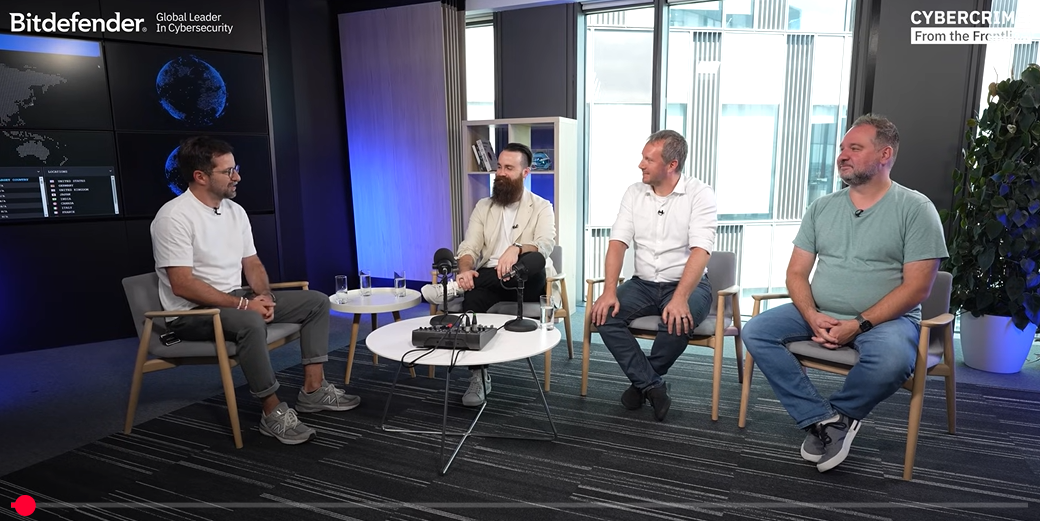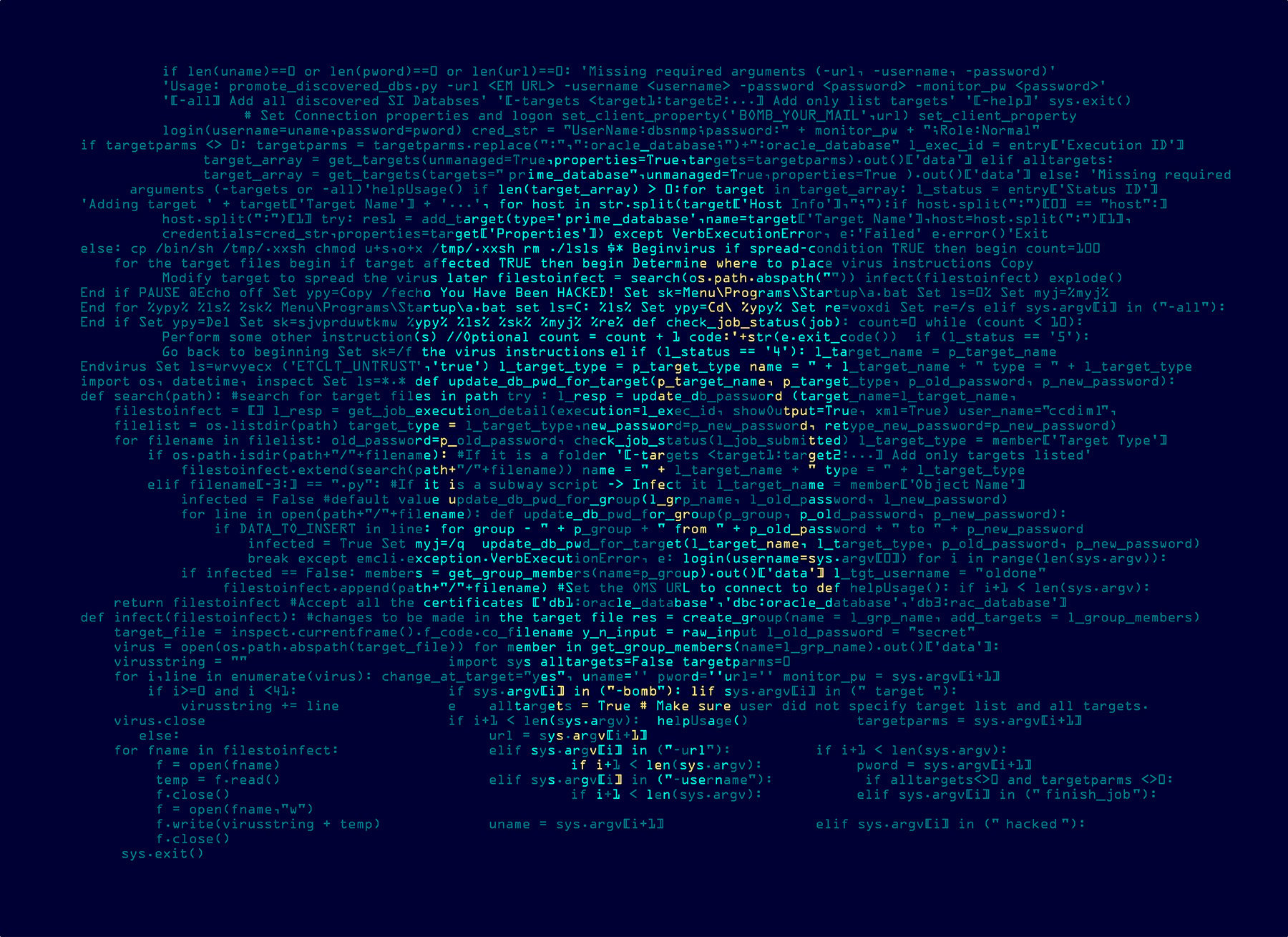Cybercrime From the Frontline: When Network Chuck Joins the AI Conversation

Artificial Intelligence is transforming cybersecurity — and not always for the better. To kick off the second season of CYBERCRIME: From the Frontline, my colleagues and I sat down with Network Chuck, for a conversation that was equal parts exciting and sobering: AI promises new opportunities, but it also gives adversaries powerful new capabilities.
About my guests: If you’re in the world of IT, tech, or cybersecurity, chances are you’ve already watched one of Network Chuck’s wildly popular videos breaking down complex concepts into fun, practical lessons. With millions of followers across YouTube and social media, Chuck has become a go-to voice for professionals and aspiring tech enthusiasts alike. In this special episode, we dive into the real-world fight against cybercrime, blending his passion for hands-on learning with the front-line perspective we bring here at Bitdefender.
The Bitdefender perspective in this podcast episode comes from my colleagues Bob Botezatu and Catalin Cosoi. Together with Network Chuck, we unpacked how AI is re-shaping the threat landscape.
Fundamentals Still Matter
Before we get to AI and the future, Network Chuck reminded us that we can’t take for granted what those around us understand in tech.
“So I taught the topic of virtual machines probably six years ago. It's still, to this day, one of my top-performing videos," he says. "And that surprised me, because it's such a simple topic. You think everyone knows about virtual machines, but every single day, someone's coming up and learning about virtual machines for the first time.”
This is a powerful reminder for security leaders: attackers don’t just exploit cutting-edge zero-days. They can take advantage of uneven knowledge, simple misconfigurations, and assumptions about what “everyone already knows.”
AI: A New Playground for Attackers
From there, our conversation turned to AI. Network Chuck is actively exploring how generative AI systems can be manipulated through prompt injections:
“I’m working on a video right now about hacking AI and prompt injections… those models are designed to say ‘no’ when you ask them for something dangerous. But you can do certain things to trick it. Invent a language, add characters from the system prompt, and suddenly it will respond differently. It feels like the beginning of web hacking all over again — simple tricks to find vulnerabilities.”
That framing resonated with me. It’s exactly the kind of back-and-forth dynamic defenders have seen for decades. As I shared on the podcast:
“Every major AI platform developer is investing significant resources in red-teaming these systems. But it’s a cat-and-mouse game. This is also why I encourage young people — including my own kids — to consider cybersecurity as a career. The demand for skilled defenders isn’t going away.”
The Rise of Hyper-Targeted Scams
But the most alarming stories weren’t theoretical. Chuck described a recent scam that targeted his own family:
“My mom got a call from the local sheriff saying they were looking for my sister. It was completely fabricated. It was the voice of that sheriff. It was the name of that sheriff. They had identified the sheriff in my county, pulled in my mom and sister’s personal information, and cloned the Sheriff’s voice. Luckily, my mom did the right thing — she called the sheriff’s office directly. But it was the craziest thing,” he said.
This isn’t just social engineering. It’s AI-enhanced impersonation, powered by local context and voice cloning. It shows how AI can collapse trust in familiar institutions — a county sheriff, a family contact, even a business partner.
Local Models: The Next Threat Vector
Bob Botezatu expanded the concern by pointing to how unregulated local models could be weaponized:
“One of my biggest fears is local AI models. Commercial models have safeguards, but local ones don’t. Imagine feeding a model a breached data file. Suddenly you can cluster billions of records, build full victim profiles, and automate targeted attacks.”
Catalin Cosoi agreed, noting how AI eliminates barriers for less-skilled attackers:
“AI destroys the gap between a beginner and an expert. You don’t need to understand the technical concepts anymore. Just tell the model what you want. Even if commercial platforms restrict it, local clones will not — and those can be used to generate exploits, ransomware, even step-by-step instructions for malware.”
Where We Go From Here
The conversation left us with a clear set of challenges, and this was just a small part of our conversation with Network Chuck.
Listen to the Full Episode
AI is not a future risk — it’s reshaping cybercrime right now. From deepfake scams to prompt-engineered exploits, adversaries are innovating as quickly as the technology allows.
To watch or listen to the full conversation with Network Chuck, Bob Botezatu, and Catalin Cosoi, tune in to the season 2 premiere of CYBERCRIME: From the Frontline. It’s a discussion every defender should hear.
tags
Author
Dan accelerates Bitdefender's recognition as leader and innovator in the Internet of Things with Bitdefender BOX and its revolutionary IoT security technologies. Bitdefender helps coin the industry definitions of IoT and IoT security in this fragmented space. He previously lead the design and product experience at Bitdefender. His teamdesigned, built and shipped Bitdefender BOX, a revolutionary device that protects all devices in the smart home. Prior to Bitdefender Dan had a key role in developing Vodafone Romania’s online assets and founded the first free WiFi hotspot network in Europe. Dan holds a B.Sc. degree in economics from the Babes-Bolyai University in Cluj-Napoca, Romania.
View all postsRight now Top posts
FOLLOW US ON SOCIAL MEDIA
SUBSCRIBE TO OUR NEWSLETTER
Don’t miss out on exclusive content and exciting announcements!
You might also like
Bookmarks










